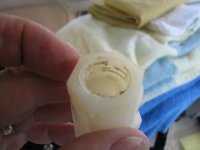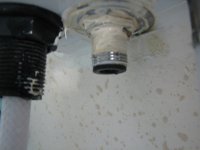Yes, Salt water can ruin Gortex. We will see on this jacket if it retains it water repelancy or not. We washed it in fresh water today. There are all sorts of Gore-tex PTF membranes--some of the garmets are specifically designed for salt water (Ocean Technology), in others the pores will be clogged with the salt and very difficult to get out. I had a new Gortex jacket ($500 in those days)I loaned to one of my crew on a Transpac delivary return--and it came back--no longer water proof. There have been many changes in the GoreTex membranes thru the years.
The PTF Gore Tex membrane is only a small part of the construction of the garmet. There are many factors including types of outer and inner layers, fabric, seals, breathing mesh etc which go into the garmet design--and the cost involved increase with the more complex gear.
If you are ordering foul weather gear, and it is Gortex and to be used in Salt water, be sure that that perticular item is designated for salt water. This jacket was a LL Bean, not a specifically designed salt water garmet, but as a light rain jacket.
As Dave noted, read:
http://www.paddles.com/users/wildcamp/goretex.html, including the GoreTex basics. I have several Gortex outfits--including a cycling outfit and hiking gear. Incidently DWR is "durable water repellant", which is built into the outer fabric at manufacture. This wears off and is replaced--but never as well as the initial fabric. Also it is fairly easy to damage the PTF membrane with chemicals and the wrong soaps etc, so look carefully at instrucitons before doing washes or "restoration". As Dave noted there are several various sprays which can be applied to the garmet to increase the balling up and shedding of water from the surface fabric.
But for offshore salt water work consider only Gore Tex Ocean technology gear--this will cost in the neighborhood of $1,200 or more for a full suit. The top of the line jackets go for about $800 from Henri Loyd, Musto or Mustang. There are other "Breathable" jackets--and a lot of the comfort of the jacket depends on the design of the other layers as well as the membrane.
I use a PVC North Sports two piece suit (full bib pants) or a one piece PVC Line 7 suit for offshore use. These are still usable after many years of ocean racing and cruising. But they are hot and heavy, so I save them for cold and very heavy weather. The light Gore Tex jackets I use are for rain in hot weather in Florida, and are not salt resistant.


